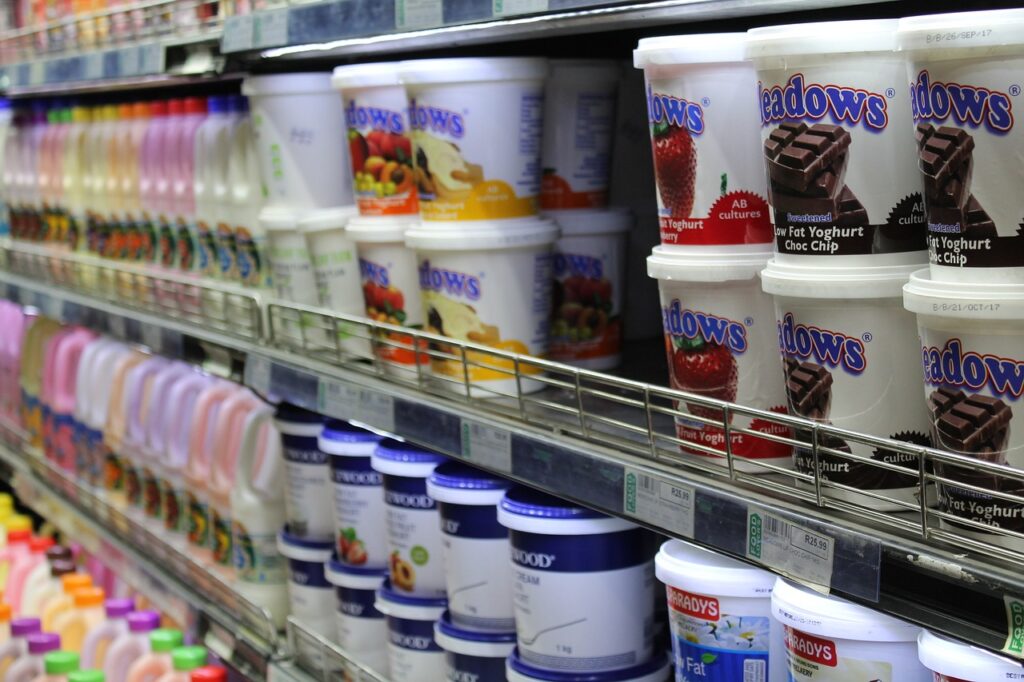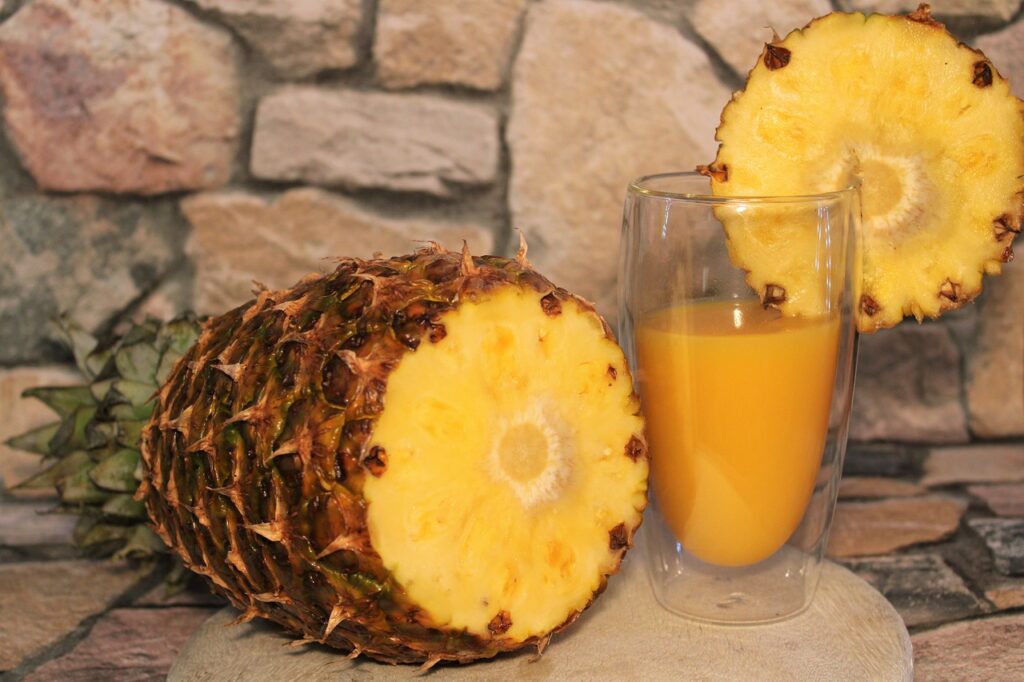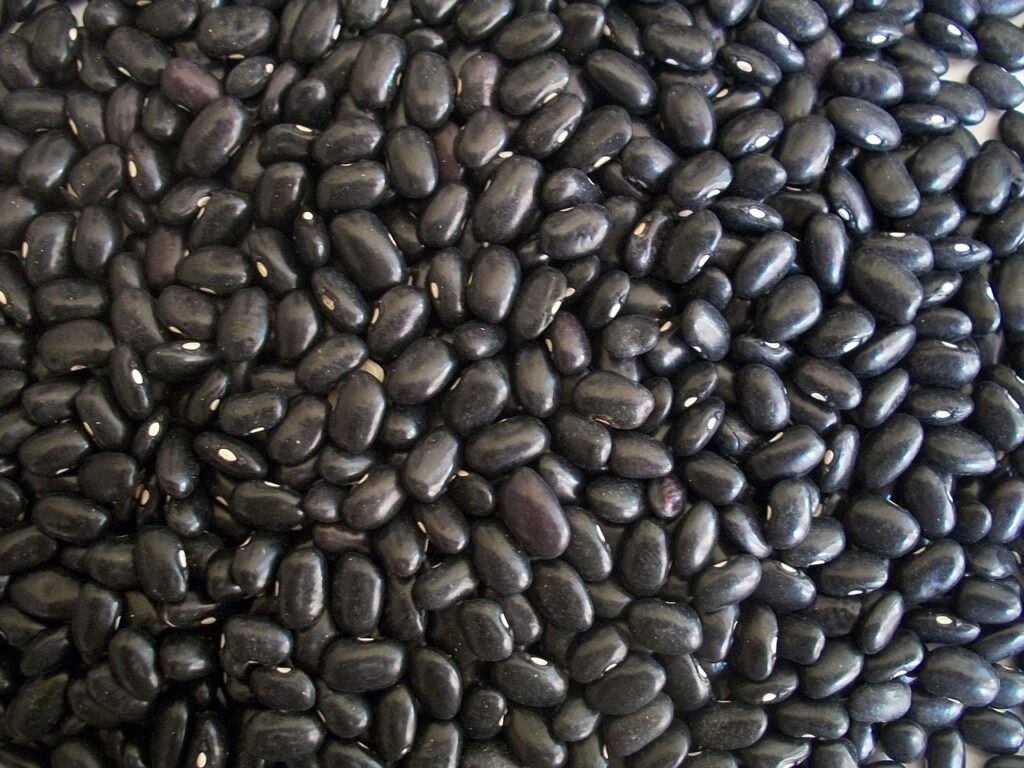Looking to add some variety to your dairy-free keto diet? Look no further than this low-carb guide that will introduce you to a whole range of tasty vegetables.
From above ground favorites like broccoli and spinach to below ground options like radishes and turnips, this guide has got you covered.
But it doesn't stop there. You'll also discover guidelines for incorporating these vegetables into your keto diet, as well as tips for ordering keto-friendly options at fast-food restaurants.
So get ready to tantalize your taste buds and take your keto journey to the next level.
Common Dairy-Free Keto Vegetables

When following a dairy-free keto diet, there are a variety of vegetables that you can enjoy while keeping your carb intake low. Green bell peppers, green beans, cauliflower rice, leafy greens, broccoli, and summer squash are all excellent choices.
Green bell peppers contain only 2 grams of net carbs per 100 grams and are great for adding crunch and flavor to your meals. Green beans are another low-carb option, with only 3 grams of net carbs per 100 grams. Cauliflower rice is a versatile substitute for traditional rice and can be used in a variety of dishes.
Leafy greens like spinach and lettuce are packed with nutrients and have very few carbs. Broccoli is also a great choice, with only 4 grams of net carbs per cup. When cooking these vegetables, opt for healthy fats like coconut oil or olive oil.
Red or yellow bell peppers and summer squash can also be enjoyed in small amounts while staying within your keto carb limit. Incorporating these vegetables into your dairy-free keto diet won't only provide essential nutrients but also add variety and flavor to your meals.
Above Ground Vegetables
When following a dairy-free keto diet, above-ground vegetables are a great choice. These vegetables are nutrient-rich, providing essential vitamins and minerals without adding excessive carbs to your diet.
Leafy greens like spinach and kale are packed with nutrients and can be used in various dishes, while cruciferous vegetables like cauliflower and broccoli are versatile and can be roasted, steamed, or used as a base for keto-friendly recipes.
Incorporating these above-ground vegetables into your meals won't only add flavor and variety but also support your keto lifestyle.
Nutrient-Rich Leafy Greens
Incorporating nutrient-rich leafy greens into your diet is a practical and delicious way to boost your vitamin and mineral intake while following a low-carb keto lifestyle.
Leafy greens like spinach and kale are excellent choices as they're low in net carbs and high in essential nutrients. For example, one cup of cooked spinach contains only 3.6 grams of net carbs and provides a significant amount of vitamin A and vitamin C. Similarly, kale is also low in carbs, with only 4.7 grams of net carbs per cup.
These vegetables can be enjoyed in salads, sautéed, or incorporated into various keto-friendly recipes. By including nutrient-rich leafy greens in your diet, you can ensure that you're getting the vitamins and minerals you need while keeping your carb intake low.
Versatile Cruciferous Vegetables
To continue enhancing your nutrient intake while following a low-carb keto lifestyle, let's now explore the versatility of cruciferous vegetables, also known as above-ground vegetables.
These low-carb veggies, including broccoli, cauliflower, and Brussels sprouts, aren't only delicious but also packed with essential vitamins and minerals. They're an excellent choice for those on a low carb diet, as they've a low net carb count per serving. For example, broccoli contains just 4 grams of net carbs per 100 grams.
Cruciferous vegetables are particularly high in vitamin K, which plays a role in blood clotting and bone health. They also provide vitamins C and K, which can help decrease insulin resistance and reduce the risk of heart disease.
Incorporating cruciferous vegetables into your meals can provide flavorful and nutritious side dishes that support your ketogenic diet goals.
Below Ground Vegetables

When it comes to below ground vegetables on a keto diet, it's important to be mindful of the carb content. Root vegetables like beets and sweet potatoes can be higher in carbs, so moderation is key.
On the other hand, onions and garlic offer health benefits and are low in digestible carbs.
Adjusting portion sizes and experimenting with different below ground vegetables can help you find the right balance while staying within your daily carb limit.
Root Vegetable Varieties
Root vegetable varieties, such as carrots, radishes, and turnips, can be a delicious and nutritious addition to your keto diet. However, it's important to be mindful of their carb content as they're higher in carbs compared to above-ground vegetables. Portion control is key to ensure you stay within your daily carb limit.
Carrots, for example, have around 6 grams of net carbs per serving, while radishes and turnips have significantly fewer carbs, making them a good choice for the keto diet.
To enjoy root vegetables while keeping your carb intake low, consider roasting, steaming, or mashing them. These cooking methods can enhance their flavors without adding extra carbs.
Cooking Methods for Roots
If you're looking to add some variety to your keto diet, you'll be pleased to know that there are several delicious cooking methods for root vegetables that can help you enjoy their flavors while keeping your carb intake in check.
Here are three cooking methods for roots:
- Roasting: Toss roots in olive oil, salt, and pepper, then roast in the oven until tender and caramelized. This method brings out the natural sweetness of the roots and adds a crispy texture.
- Steaming: Place roots in a steamer basket over boiling water and cook until tender but still slightly crisp. Steaming preserves the natural flavors and nutrients of the roots while keeping them moist.
- Sautéing: Heat oil in a skillet, add sliced roots, and cook until browned and tender, adding seasonings as desired. This method creates a deliciously caramelized exterior with a soft and flavorful interior.
Guidelines for Including Vegetables on a Keto Diet
Including vegetables on a keto diet can be done by following these guidelines to ensure you stay within your net carb intake.
When choosing vegetables, it's best to go for low-carb options that are also high in fiber. Spinach, lettuce, asparagus, and avocado are great choices as they've only around 2-4 grams of digestible carbs per one cup serving. These vegetables not only help you stay within your carb limit but also provide numerous health benefits. For instance, they're a good source of vitamins and minerals, including vitamin K, which helps protect against heart disease and cancer. Additionally, they're low in calories and can help lower LDL (bad) cholesterol levels, reducing the risk of heart disease. Leafy greens are also high in vitamin C, which is important for immune function and improved brain function.
When it comes to other vegetables, such as bell peppers, Brussels sprouts, and green beans, it's important to moderate your consumption as they contain slightly more carbs. However, they still offer many nutritional benefits and can be enjoyed in moderation while staying under the daily 20g carb limit on a keto diet.
To prepare your vegetables, consider using cooking methods that retain their nutrients, such as steaming or lightly sautéing. You can also season them with butter or cook them in oils like lard, coconut oil, avocado oil, or ghee to add flavor and increase your fat intake.
Vegetables and Healthy Fats

To ensure you're getting the most out of your keto diet, it's important to understand the role of healthy fats when it comes to incorporating vegetables into your meals. Healthy fats are a great source of energy and can help promote feelings of fullness, making them a valuable addition to your keto vegetables.
Here are three ways in which healthy fats can benefit your vegetable consumption on a keto diet:
- Healthy fats, such as avocado, olive oil, and coconut oil, are great for cooking and dressing keto-friendly vegetables. They not only add flavor but also provide health benefits like promoting heart health and reducing the risk of common eye diseases.
- Incorporating high-fat vegetables like avocados and olives can help meet your fat intake goals while on a keto diet. These vegetables are loaded with antioxidants and contain less total carbs minus fiber, making them a good source of vitamins K and C.
- Dark leafy greens like spinach and kale are low in carbs and high in healthy fats, making them ideal for a keto diet. They're also a great source of vitamins K and C, which are important for brain health and reducing inflammation.
Top 10 Dairy-Free Keto Vegetables
When following a dairy-free keto diet, it's important to incorporate a variety of nutrient-rich vegetables into your meals. Not only do vegetables provide essential vitamins and minerals, but they're also low in carbs and can help you stay in ketosis. Here are the top 10 dairy-free keto vegetables to include in your diet.
- Spinach: This leafy green is packed with nutrients and low in carbs, making it a great choice for keto. It's also rich in antioxidants that support heart health and reduce the risk of common eye diseases.
- Lettuce: Lettuce is another low-carb vegetable that can be enjoyed in salads or as wraps. It's a good source of fiber and provides a significant amount of vitamin C, which is important for immune function.
- Asparagus: Asparagus isn't only delicious, but it's also low in carbs and high in fiber. It contains the DV for vitamin C and is rich in folate, which is essential for cell growth and development.
- Avocado: Avocado is a staple on the keto diet due to its high fat content. It's a great source of monounsaturated fat, which is beneficial for heart health. Avocado also provides fiber and is rich in potassium, which can help decrease blood pressure.
- Cucumber: Cucumbers are low in carbs and high in water content, making them a hydrating and refreshing choice. They're also a good source of vitamin K, which is important for blood clotting.
- Broccoli: Broccoli is a cruciferous vegetable that's low in carbs and high in fiber. It's also rich in antioxidants and contains compounds that may help decrease the risk of certain cancers.
- Cauliflower: Cauliflower is a versatile vegetable that can be used as a substitute for rice or mashed potatoes on the keto diet. It's low in carbs and high in fiber, making it a filling and nutritious choice.
- Zucchini: Zucchini is a summer squash that's low in carbs and high in water content. It's a good source of potassium and vitamin C, and it can be spiralized to make low-carb pasta alternatives.
- Green Bell Peppers: While bell peppers do contain some carbs, they're still keto-friendly when consumed in moderation. They're high in fiber and provide a good amount of vitamin C.
- Brussels Sprouts: Brussels sprouts are low in carbs and high in fiber, making them a good choice for the keto diet. They're also rich in vitamins C and K, as well as antioxidants that support overall health.
Incorporating these dairy-free keto vegetables into your meals won't only provide essential nutrients but also contribute to your overall health and well-being on the keto diet.
Keto-Friendly Vegetable Crudités

Keto-friendly vegetable crudités are a delicious and nutritious option for a low-carb snack. They not only provide a satisfying crunch but also offer a variety of vitamins, minerals, and fiber. When preparing your crudités, it's important to choose low-carb vegetables to keep your carb intake in check. Here are some tips to help you create the perfect keto-friendly vegetable crudités:
- Opt for colorful vegetables: Choose red or yellow bell peppers instead of green ones. These vibrant peppers are lower in carbs and add a pop of color to your platter.
- Include non-starchy vegetables: Consider using non-starchy vegetables like cucumbers, celery, radishes, and cherry tomatoes. These vegetables are low in carbs and make excellent choices for your crudités.
- Avoid high-carb vegetables: Although commonly used in crudités, carrots and peas are fairly high in carbs and should be avoided if you're following a strict keto diet.
Remember to pair your vegetable crudités with high-fat dipping sauces like keto ranch, mayonnaise, or avocado hummus to add flavor and increase your fat intake. By choosing the right vegetables and dips, you can enjoy a satisfying and keto-friendly snack without worrying about your carb count.
Studies suggest that these vegetables, especially those that grow above ground, have properties that may protect your health. So go ahead and indulge in some delicious and nutritious keto-friendly vegetable crudités!
Legumes, Corn, and Quinoa: What to Avoid
Legumes, corn, and quinoa should be avoided on a keto diet due to their high carbohydrate content. These foods aren't suitable for those following a low-carb, dairy-free keto diet. Legumes, which include peas, beans, and lentils, are known for being high in carbs and should be avoided. Corn, too, is high in carbs and not recommended for those on a keto diet. Quinoa, although considered a healthy grain alternative, is relatively high in carbs, containing about 21 grams of carbs per 100 grams. Strict keto dieters should steer clear of quinoa to maintain their low-carb intake.
While legumes, corn, and quinoa may offer nutritional benefits, they aren't compatible with the ketogenic diet due to their carb content. It's important to be mindful of carb foods when following a low-carb, dairy-free keto diet. By avoiding legumes, corn, and quinoa, you can make room for a wide variety of other low-carb vegetables that are suitable for a keto diet.
As we strive to provide up-to-date and accurate information in our articles, it's crucial to highlight the exclusion of legumes, corn, and quinoa from a keto diet. This ensures that individuals following a dairy-free, low-carb keto lifestyle can make informed choices and prioritize suitable vegetables that align with their dietary goals.
Grains and Sugar: Not Compatible With a Keto Diet

Grains and sugar aren't compatible with a keto diet due to their high carbohydrate content. When following a keto diet, it's important to reduce your intake of grains and sugar to achieve and maintain a state of ketosis. Here are some important facts to keep in mind:
- Grains: Grains like corn, quinoa, and legumes such as peas, beans, and lentils are high in carbs and should be avoided on a keto diet. This means saying no to foods like breads, cereals, pastas, and baked goods that are made from grains or grain flour.
- Sugar: Refined and whole grains, as well as most sugars from plants like sugar cane, beets, or corn, shouldn't be consumed on a keto diet. This includes high-fructose corn syrup found in sodas and processed foods. Sugar can significantly increase your carb intake, making it difficult to stay in ketosis.
- Focus on Above-Ground Vegetables: Instead of grains and sugar, aim to include plenty of above-ground vegetables in your keto diet. These vegetables, like broccoli, are low in carbs and high in essential nutrients. They can improve your health and provide the ideal balance of vitamins and minerals. According to Franziska Spritzler, a registered dietitian, above-ground vegetables are an excellent source of fiber and can help you stay full while keeping your carb intake in check.
Conclusion
In conclusion, incorporating dairy-free keto vegetables into your diet is a practical and evidence-based way to maintain a low-carb lifestyle. By focusing on above ground vegetables and healthy fats, you can enjoy a variety of tasty options that are both satisfying and nutritious.
Remember to avoid legumes, corn, and quinoa, as they aren't compatible with the keto diet. Embrace the power of veggies and discover how they can enhance your keto journey.
Don't forget, 'Rome wasn't built in a day,' so be patient and consistent in your approach.







